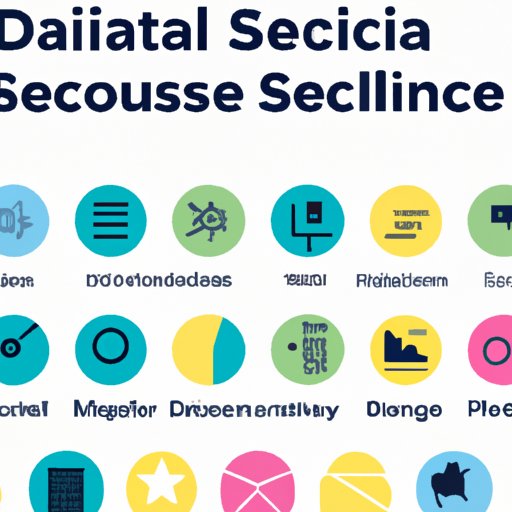Introduction
As a data scientist, you need to demonstrate your qualifications and capabilities through a comprehensive portfolio. A well-crafted portfolio can help you stand out from the competition and land the job of your dreams. In this article, we’ll discuss how to create an impressive data science portfolio that will showcase your skills and experience.

Provide a Summary of Your Skills and Experience
Your portfolio should provide an overview of your professional background, educational credentials, and technical expertise. Start by identifying your strengths and listing any awards, certifications, and publications you have received. Include information about the programming languages and software you are familiar with, and describe any relevant work experience you have.
You should also summarize your educational background, including the degree programs you have completed and any courses or seminars you have taken related to data science. If you have any special qualifications, such as a certification from a professional organization, be sure to mention it.
Include Projects That Showcase Your Data Science Skills
When creating your portfolio, select projects that highlight your data science skills and experience. Include detailed descriptions of the projects and explain the steps you took to complete them. Be sure to include any datasets you used and any code you wrote. You should also include visualizations and other supporting materials that illustrate the results of your work.
When presenting your projects, use visuals that are easy to understand and eye-catching. Consider using interactive charts, graphs, and diagrams to make your portfolio more engaging. Additionally, focus on showcasing projects that demonstrate the full scope of your data science skills, from cleaning and exploring data to developing models and interpreting results.
Highlight Your Problem-Solving Ability
Your portfolio should demonstrate your ability to solve complex problems. Include projects that illustrate how you identified and addressed issues, developed innovative solutions, and improved existing processes. Be sure to explain the challenges you faced and the methods you used to overcome them. You should also highlight the changes you made and the positive impact they had on the organization.
To further demonstrate your problem-solving ability, consider incorporating stories into your portfolio. According to research conducted by Harvard Business Review, “storytelling is an incredibly powerful tool for problem-solving. It helps us organize information and draw connections between seemingly unrelated concepts.”
Demonstrate Your Understanding of Tools and Technologies
Your portfolio should showcase your knowledge of the tools and technologies used in data science. Include projects that demonstrate your familiarity with different software packages and programming languages. Explain how you used them to explore data, develop models, and produce results. You should also provide examples of the scripts, algorithms, and functions you wrote.
Additionally, emphasize the techniques you used to optimize the performance of your models. This could include techniques such as hyperparameter tuning, feature engineering, and ensemble learning. By demonstrating your understanding of these techniques, you can show potential employers that you are well-equipped to handle complex data science tasks.
Share Your Knowledge Through Blog Posts
Blogging is a great way to share your knowledge with others and establish yourself as a thought leader in the data science community. Create blog posts that offer insights into the latest trends and developments in the field. You can also write about the projects you’ve completed and the tools and techniques you used to complete them.
By regularly publishing blog posts, you can demonstrate your expertise and stay up-to-date on the latest innovations in data science. Additionally, blogging can help build your network and introduce you to potential employers.

Publish Case Studies and Presentations
Creating case studies and presentations is another effective way to showcase your data science skills. Create comprehensive reports that document the process you followed to complete a project and the results you achieved. Be sure to include visualizations and other supporting materials that illustrate the impact of your work.
You should also create presentations that explain the key findings of your projects. Use visuals that are easy to understand and make sure that your slides are organized and well-structured. Additionally, consider recording video presentations and posting them online.

Participate in Community Events and Conferences
Participating in community events and conferences is one of the best ways to expand your network and get noticed by potential employers. Attend events where you can meet and connect with other data scientists and exchange ideas. Additionally, take advantage of opportunities to speak at conferences and workshops. This will give you the chance to share your knowledge and demonstrate your abilities.
By participating in community events and conferences, you can make valuable connections and gain recognition within the data science community. Additionally, attending events will help you stay up-to-date on the latest trends and developments in the field.
Conclusion
Creating a data science portfolio is essential if you want to stand out from the competition and land the job of your dreams. Your portfolio should provide an overview of your skills and experience and showcase your data science projects. Additionally, you should highlight your problem-solving ability, demonstrate your understanding of tools and technologies, and participate in community events and conferences.
By following the tips outlined in this article, you can create an impressive portfolio that will help you attract the attention of potential employers.
(Note: Is this article not meeting your expectations? Do you have knowledge or insights to share? Unlock new opportunities and expand your reach by joining our authors team. Click Registration to join us and share your expertise with our readers.)
